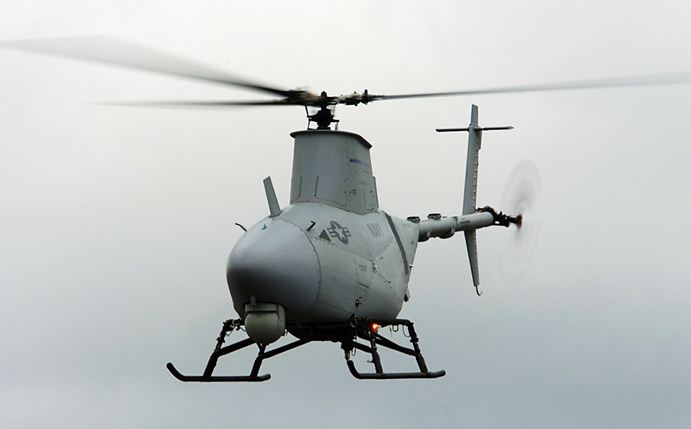 |
| MQ-8C Fire Scout Copter Drone |
Militarymedia.net - The era of slow robotization but certainly spread to the world of anti-submarine weapons systems, one indication is the involvement of drones in submarine missions or search operations. After General Atomics Aeronautical Systems and the U.S. Navy successfully conducted a sonobuoy launch test of the MQ-9A Reaper Block 5 drone, there was further news from the drone world, where similar capabilities can now be run by copter drones.
Northrop Grumman has announced it has successfully conducted an anti-submarine mission test last year (2020) involving an MQ-8C Fire Scout copter drone equipped with sonobuoy devices. The trial launch of the MQ-8C Fire Scout sonobuoy was conducted on October 29, 2020 off the coast of Southern California. The U.S. Navy-led test implies a resurgence of interest in the submarine hunting capabilities of the United States and its allies in recent years, where potential underwater threats are increasing from Russia and China.
The trial launch of sonobuoy from a copter drone involved a British company that is a supplier and a sonobuoy signal processing system, namely Ultra. In the trial, MQ-8C Fire Scout was equipped with two dispensers, each of which contained 24 sonobuoy cells. It is not known exactly the profile or specification of the sonobuoy used in the trial.
The U.S. Navy said deploying sonobuoy from copter drones could facilitate anti-submarine missions on surface warships, and more could save operational costs. During this time, sonobuoy was launched from anti-submarine helicopters (AKS), such as the MH-60R Seahawk which released dipping sonar, a.k.a. sonar dip.
This new AKS capability will offer ship commanders the flexibility to use not only conventional AKS systems, but also take advantage of the sharper increased availability of unmanned aircraft against an expanded range of missions.
Northrop Grumman said sonobuoy is used to conduct multistatic acoustic searches over large areas. Ultra offers different types of multistatic acoustic sonobuoy with active or passive sonar. Ultra has so far been known as a supplier of 90 percent of all sonobuoy used by NATO countries.
The Sonobuoy-carrying MQ-8C offers a way to more quickly expand the size of the array, making enemy submarines more difficult to escape. The use of artificial intelligence and machine learning technologies can help MQ-8C process the data they receive from sonobuoy arrangements.
The next step allows the system to get rid of unwanted data and false positives, even before giving anything to the crew on the warship, it can all overall reduce the personnel workload and instead speed up the search process of opposing submarines.
In naval warfare, sonobuoy is deployed to detect submarine movements. Sonobuoy itself is classified into three categories: active, passive and special purpose. Active sonobuoys emit sound energy (ping) into the water and capture echoes over UHF/VHF radios to ships or aircraft receiving. Active sonobuoy constantly pings to get underwater detection.
In its history, the United States became the first country to use helicopter drones to monitor their marine territory. The drones used are Fire Scout types and are used in Guam to monitor the movement of the Pacific ocean.
 |
| MQ-8C Fire Scout Copter Drone |









